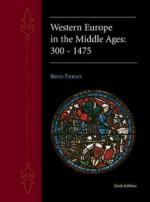|
This section contains 1,711 words (approx. 6 pages at 300 words per page) |

|
Churches and Chapels. Many churches other than monasteries existed, and even monasteries varied widely. A village often had a local church whose priest ministered to that community and sometimes even to neighboring villages. Within towns there could be urban monasteries (generally founded before the town itself), parish churches whose priests acted much like village priests, private chapels, and other ecclesiastical institutions and structures. Like monasteries, most were built of stone, and, like monks, the clergymen who ran them had a higher standard of living and controlled a larger amount of property than most of their neighbors. Like their monastic counterparts, these clergy also had a day that was regulated at least in part by an ecclesiastical calendar and the need to say mass or perform other religious services. Urban churches often had significant differences from their rural counterparts. In particular, the...
|
This section contains 1,711 words (approx. 6 pages at 300 words per page) |

|




